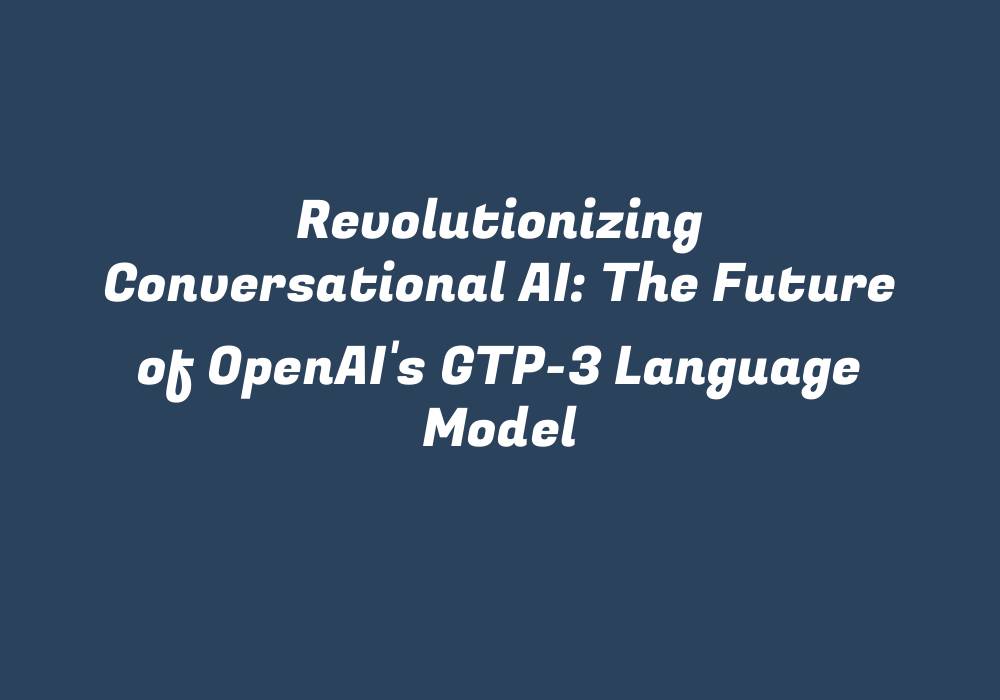Introduction to GPT-3 and its Revolutionary Impact
The world has witnessed a significant advancement in artificial intelligence (AI) technology, particularly in natural language processing (NLP). One of the most notable developments is OpenAI’s Generative Pre-trained Transformer 3 (GPT-3), which has demonstrated remarkable proficiency in generating human-like responses to prompts. This cutting-edge model represents a turning point for conversational AI, with potential implications in various sectors such as education, customer service, healthcare, and more.
Understanding GPT-3: Language Models and Capabilities
GPT-3 is a language model based on deep learning techniques that excel at generating text in response to a given input. It possesses an impressive capacity for understanding the context of a conversation, which enables it to provide coherent responses. GPT-3’s architecture is built upon the Transformer framework introduced by Google AI researchers in 2017, which focuses on learning language representations and relationships among words.
The model was trained on a vast corpus of text data from the web, which includes books, articles, essays, and other sources. This diverse dataset allowed GPT-3 to acquire extensive knowledge about various domains and understand linguistic nuances across different contexts. As a result, its responses demonstrate exceptional coherence and relevance while maintaining the unique characteristics of human language.
GPT-3’s Applications in Conversational AI
The versatility of GPT-3 opens up numerous opportunities for applying conversational AI technology in various fields. Let us explore some potential applications that highlight the model’s transformative impact:
1. Education: GPT-3 can be integrated into educational platforms to provide personalized feedback, create custom lesson plans, and answer students’ questions regarding complex subjects. This can help improve learning outcomes by facilitating a more engaging and interactive environment for both teachers and learners.
2. Customer Service: Businesses can use conversational AI powered by GPT-3 to manage customer inquiries and complaints around the clock. The model is adept at understanding natural language, making it suitable for handling complex requests and providing personalized responses that cater to individual needs. As a result, this technology could help improve customer satisfaction and boost sales.
3. Healthcare: GPT-3 can assist healthcare professionals in various ways, such as interpreting medical records, offering advice on symptom management, or providing guidance about specific treatments and medications. This would enable medical practitioners to focus more on direct patient care while still having access to valuable information at their fingertips.
4. Creative Writing: GPT-3’s ability to generate human-like text makes it a promising tool for creative writing endeavors. It can assist authors in crafting compelling stories, producing unique characters, and even drafting entire novels. By automating some aspects of the creative process, this technology could free up valuable time for writers to focus on refining their work and exploring new ideas.
5. Chatbots: GPT-3’s language processing capabilities make it an ideal candidate for powering chatbots that simulate human conversation effectively. By engaging in natural dialogue with users, these intelligent bots could provide information, answer questions, and offer support across various domains, such as e-commerce, travel planning, or personal assistance.
Future Prospects and Ethical Considerations
The potential applications of GPT-3 are vast and far-reaching, transforming industries and improving the overall human experience. However, it is crucial to consider the ethical implications of integrating AI into various sectors. As conversational AI becomes more prevalent, questions about privacy, data ownership, bias, and the role of human interaction in decision-making will need careful examination.
To ensure the responsible development and implementation of GPT-3-powered technologies, it is essential to foster open dialogue among stakeholders, including researchers, developers, policymakers, and end users. By addressing these ethical concerns proactively, we can work towards harnessing the full potential of conversational AI while mitigating potential risks and maximizing its benefits for society.
Conclusion
The introduction of OpenAI’s GPT-3 represents a significant milestone in the advancement of conversational AI, demonstrating the possibility of creating language models that understand context and generate responses more similar to humans. As this technology continues to evolve, we can expect to see an even greater impact on various industries, transforming the way we communicate and interact with each other across diverse domains. By embracing the ethical considerations surrounding its implementation, GPT-3 has the potential to revolutionize conversational AI in ways that improve our daily lives and unlock new possibilities for a more connected world.
